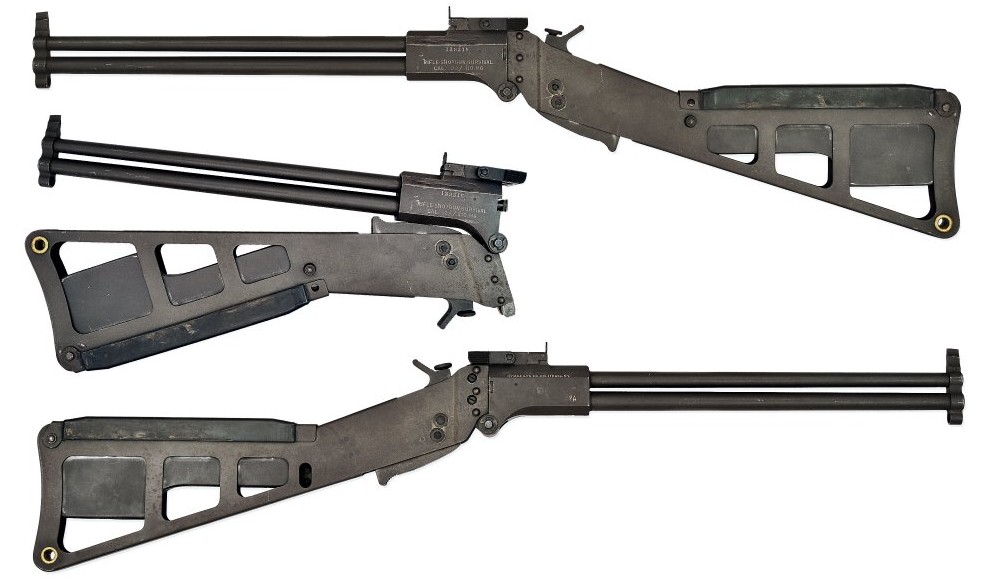
 PROOF
PROOF
































During WW2 there was a possibility that pilots could be shot down over some really inhospitable places. Early pilots carried personal handguns and rifles with them on long distance flights for protection. In WWI, pilots carried stripped down M1903 Springfields. In WWII, they carried Stevens Combination guns. After WWII the US military developed the M4 Survival rifle, a short collapsible stock .22 Hornet bolt action rifle made by H&R that could be stored as part of the survival gear of an aircraft to give stranded aircrew a small caliber tool for harvesting food and keeping away predators. The biggest drawback of the M4 was that it was considered too heavy, while only carrying 4 rounds. This led to the development of the M6. The M6 Air Crew Survival Weapon was a fascinating little combination gun. Taking a page from the German Air Force’s (Luftwaffe) WWII M30 survival rifle, which was a three-barreled gun that was in 12 Gauge and 9.3x74mm, the USAF wanted something similar but smaller. Their design was a two-barreled over and under, break-action gun with a .22 Hornet on top and a .410 gauge shotgun on the bottom. Built for sustainability and survivability, it didn’t need to be cosmetically appealing which was a good thing. It needed to be capable of taking small game such as rabbit and wild pigs for food purposes, but also capable of providing a margin of protection from wolves and predators all the way up to the occasional two-legged variety. Hence the two calibers.
Due to the possible use of the M4 by downed aircrew as a combat weapon against afore mentioned two legged variety, military issue ammunition in .22 Hornet is loaded with full metal jacket bullets to comply with the Hague Convention barring use of expanding bullets in warfare. It was considered un-sportsmanlike behaviour if you shot someone with soft nose bullets.
M4 Rifle
































